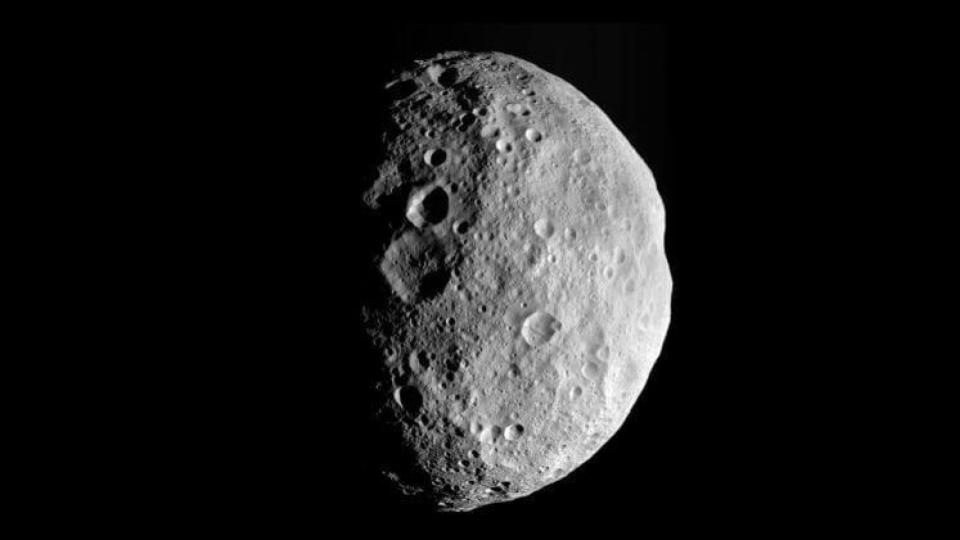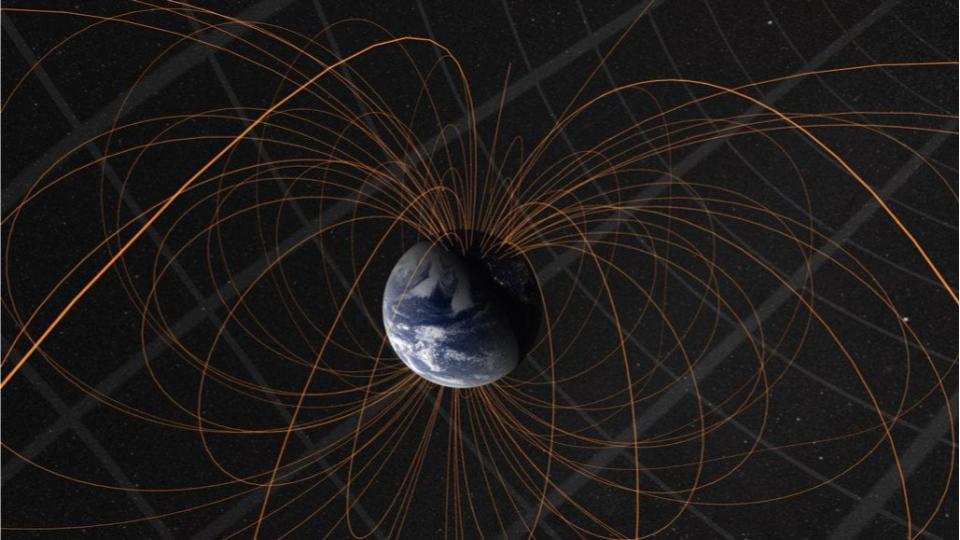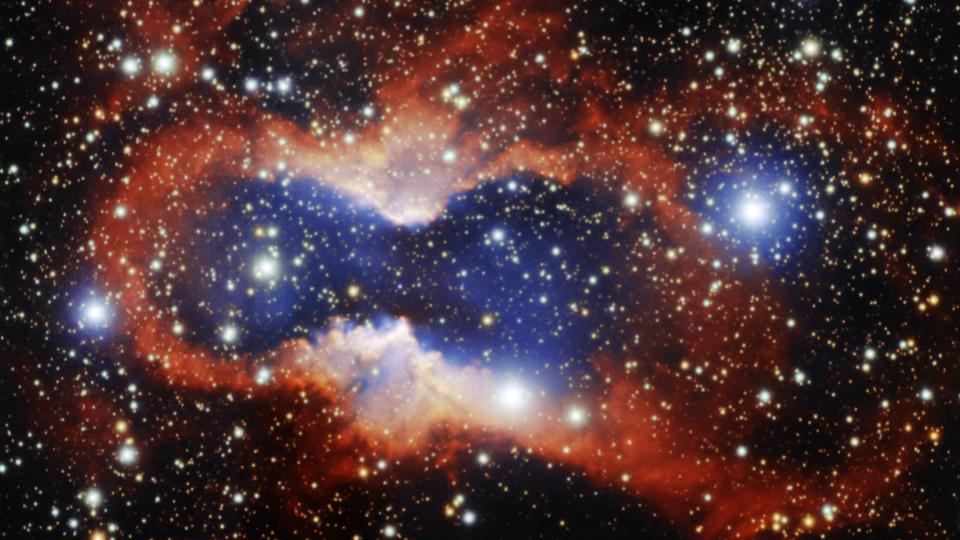In today’s episode we learn about how the lucky train of events that delivered a rock from Vesta to scientists on Earth allows us to study volcanism on an asteroid. We also look at how melty silicate rocks of the past may have started Earth’s magnetic field early in our planet’s past. Although not a rock, we also talk about what we’re learning from a stunning new image of a planetary nebula.

- Turbulent times revealed on Asteroid 4 Vesta (Curtin U)
Today we start with a look at Vesta, the number 2 asteroid in the main belt and the largest of the “not even a dwarf planet” objects in the inner solar system. This 525 km across rock was imaged in detail by the Dawn mission and can be chemically studied thanks to a wealth of meteorites that have been broken off through past impacts and flung at Earth. In a new paper in Geochimica et Cosmochimica Acta, scientists study the history of Vesta by looking at these samples and the craters they may have come from.
The lab analysis of these meteorites showed that Vesta was volcanically active for 30 million years after its formation 4.6 billion years ago. It wasn’t anticipated that this small of an object could have volcanism for this long. In general, the heat needed for liquid magma to exist is either left over from the formation of an object or comes from the decay of radioactive elements, like aluminium 26. By the time 30 million years had passed, all that aluminium would have decayed away. In trying to explain the prolonged volcanism, they speculate that maybe magma survived in slower-cooling regions of the asteroid’s crust.
This is all cool, but it actually isn’t the most interesting part of this research. The cool part is in how those magma-turned rock samples made it to Earth. It turns out that about 1 billion years after its formation, Vesta experienced a large impact that dug a deep crater where those volcanoes had been, and tossed samples of that region our direction. They weren’t all flung this way randomly, however. The team behind this paper, led by Fred Jourdan, believe all that dug up debris would have formed a rubble-pile asteroid – think Bennu or Ryugu – and this configuration protected the material until in recent times it could get knocked off, and sent to Earth as meteorites.
So, to sum this crazy tale up, 4.5 billion years ago, Vesta formed, and for 30 million years it had active volcanoes. At some point after the volcanism turned off, something large hit Vesta right were those last erupting volcanoes had been located, and that event carved up a massive amount of material. That material THEN gravitationally came together to form a rubble pile asteroid that protected the rocks from those volcanoes for billions of years, until something knocked them off and sent them to Earth, where they were found by someone among all the other rocks on our planet, identified as a meteorite, and chemically matched to the composition of Vesta, then studied… and now published in a research paper.
Go team. This shows just what has to sometimes happen for science to happen, and now we know it took longer for Vesta to completely cool off and solidify then we previously thought.

I’m generally not into rocks, but I have to admit that we can learn an amazing amount of science by studying all the different physical properties of rocks. In another paper centered on rocks, we learn that our own Earth may have had a massive magma ocean 4 billion to 2.5 billion years ago. Our world is still hot – nuclear decays across the depths of our planet continue to generate heat that churns our planet’s internal heat flows. Today, this churning magma – specifically Earth’s outer liquid iron / nickel core – plays a key role in generating Earth’s magnetic field. Historically, however, this was not the source.
Figuring out the origins of the Earth’s magnetic field hasn’t been easy, and scientists have struggled to figure out how our planet went from a generic lump of melty rocks to being a coherent planet with a well defined magnetic field. In new research coming out in Nature Communications, planetary scientists have used computer models to figure out that the early Earth would have had a massive molten silicates – minerals that include silicon. Lead author Lars Strixrude modeled how these minerals behave had high temperatures and found that they are conductive enough to generate magnetic fields. While these silicates cooled and solidified over the Earth’s first few billion years, they were liquid long enough to allow the Earth’s increasingly turbulent core to reach a point where it could take over magnetic field generation.
That hand-off from the Earth’s magnetic field coming from a liquid silicate dynamo to later coming from a liquid iron/nickel dynamo allowed our world to have magnetism from as early as possible, and more-or-less continually to the present day. This has protected our evolving atmosphere, and made life possible. This physics doesn’t look like it will be unique to our world. While Earth is unusually dense because of how it was formed, and has an unusually large iron/nickel core, this kind of a silicate magma driven magnetism could be common on super earths. These larger worlds would have longer lasting silicate magma seas. These are also the most common smaller worlds that we’ve found, and we now see amazing ways those worlds could be a bit safer for life.

- Gemini South telescope captures exquisite planetary nebula (NationalAstro.org)
Our final story of the day has nothing to with rocks. It’s a pretty picture of the Planetary Nebulae CVMP 1. This leaned over hourglass shape was formed by a star similar to our Sun or perhaps a bit bigger that puffed off its outer atmosphere toward the end of its life, and then collapsed down to leave a cooling white dwarf in its place. This white dwarf is currently 130,000 degrees Celsius and gives off enough high energy light to ionize the gas you’re seeing. As the white dwarf cools, this nebula will eventually fade away, but for now it can be seen in striking detail in this new image from the Gemini South telescope in Chile. From formation to death, it’s thought planetary nebula may persist for only 10,000 years, and scientists studying this image believe that CVMP 1 may be an elder planetary nebula that will allow scientists to study the latter millennia of Planetary nebulae evolution.
<———————>
And that rounds out our show for today.
Thank you all for listening. Today’s script was written by Pamela Gay. The Daily Space is produced by Susie Murph, and is a product of the Planetary Science Institute, a 501(c)3 non profit dedicated to exploring our Solar System and beyond. We are here thanks to the generous contributions of people like you. Want to become a supporter of the show? Check us out at Patreon.com/cosmoquestx


 We record most shows live, on Twitch. Follow us today to get alerts when we go live.
We record most shows live, on Twitch. Follow us today to get alerts when we go live.